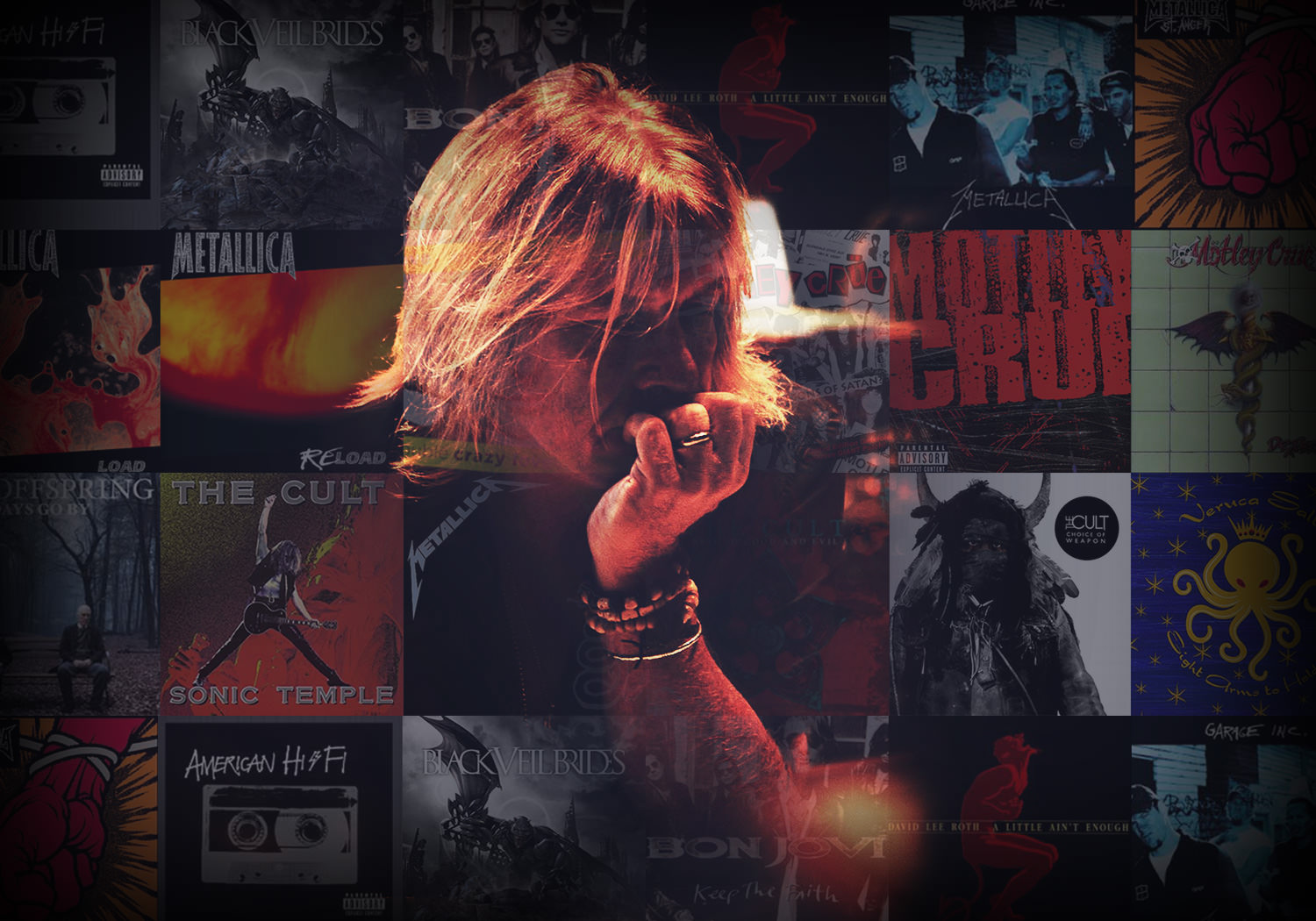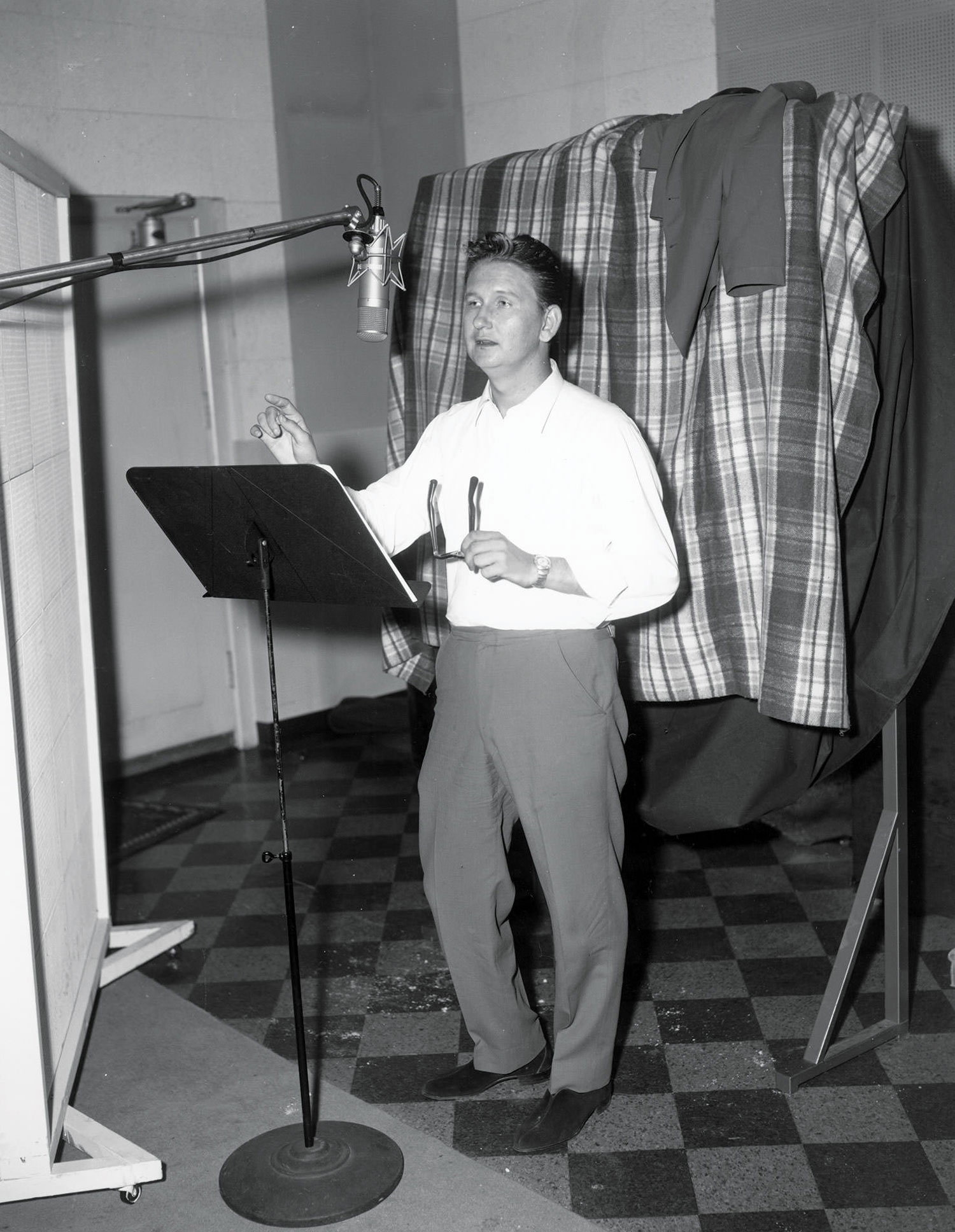In the spring of 1983, a friend and I purchased a reel-to-reel four track. Up to that point, we had been doing multi-track recording by bouncing back and forth between a cassette deck and a boom box. We wanted to upgrade our "studio" (co-opted den), so we started to look around. Shortly thereafter, a classified ad offering a four track for $350 caught our eyes.
I don't remember exactly where we went to pick it up, but I do recall that it was out in the glorious razed countryside of southeast Michigan. It was a big, white farm house with no trees and an elaborate alarm system. The owner was an audio engineer. Sound gear filled every room in the house. I got that same uneasy feeling that you get when you see an elderly person living alone with far too many cats (or maybe I was just seeing my future). After a quick look at the four track and a couple of questions, we handed over our cash. He even threw in a box of tapes. We were very excited.
The four track was an Akai. I have no idea what year the machine was made. It ran at 15 or 7 ½" ips (If you balanced the tape speed toggle switch between 7 ½" ips and 15 ips, the machine would run at 3 ¾" ips!) and could handle 4-inch, 7-inch and 12-inch reels of ¼" inch tape. It was capable of recording on all four tracks simultaneously.* It also had a very loud punch-in "ka-click" that seemed to slate directly to tape.
When we got home, we started to record almost immediately. The free tapes he'd given us were used, he'd recorded a religious convention of some sort on them. But instead of erasing all of it and then beginning to record we just left it and started. So our songs all started and ended with little un-erased comments such as, "Folks... folks... if I can have your attention now please..." and, "Love, love... love..." Over the next few months we wrote and recorded almost incessantly.
Listening to those recordings now, a few things come to mind. Mostly, I'm fascinated with the way the music sounds and the structure of the compositions. I believe these recordings are unique because the songs were created on the four track. Normally, for us (and many others), songs were written and then learned and played by our band. The songs were always whole before recording started. With the four track, we had time (and tracks) to consider things, experiment and make mistakes. Making mistakes was, of course, the best way to learn.
Here are a few things we learned:
- Coffee cans played with drum sticks sound charming when they distort.
- Plugging guitar cables into headphone jacks is bad.
- Having a Hum Buzzer (electronically adept) friend who can fix things such as a fried headphone jack is good.
- Doubling a distorted guitar tone with a cleaner tone adds clarity and crunch.
- Doubling a part with the same instrument at a slightly different pitch creates chorusing.
- Recording very difficult parts at half speed then playing them back at normal speed will trick more people than you think into believing you're a really good player.
- There is almost no end to the amusement of listening to your music backwards by flipping over the tape.
- Having a consistent tuning source (a tuner or a keyboard, not a piano because they drift over time) is helpful for doing overdubs at a later date. If you don't have one, record a tuning source (i.e. an open A on a bass) for ten or fifteen seconds before the song starts on the tape. This way, you can tune to it as it plays and then be in position to record your overdub.
- Recording two instruments with very different timbres (i.e. bass and glockenspiel) on the same track allows you to adjust their relative volumes after they've been recorded with EQ. More bass EQ brings up the bass; more treble EQ brings up the glockenspiel. If you do this kind of combining on all four tracks, it's almost like an eight track... almost.
- While mixing, putting a short delay on the guitar/bass track and panning the source to the left and the delayed signal to the right creates a richer sound.
- Not everyone is going to like, understand or care about what you've recorded. Some people are polite listeners, some will stroll away during playback, some will talk, some will tell you who you sound like, and a precious few will ask to hear it again.
- With repeated listening, the slamming doors, cars, telephones, airplanes, housemates and pets that accidentally infiltrate your recordings will seem more and more musical.
- Keep your tapes well organized, thoroughly labeled (song titles, dates, recording machine, tape speed, noise reduction, locations, musicians, instruments), in their boxes, tails out (reels) or rewound (cassettes), and away from extreme temperatures, magnets and children. Being organized helps you work faster. Protecting your tapes helps prevent drop-outs.
- Buy the best tape you can afford. For four track reel-to-reel, I recommend Ampex not Radio Shack. For cassette four tracks, I recommend TDK metal tapes not Three For A Dollar brand. Also, for cassettes, using shorter tapes (15 or 30 minutes a side) will reduce the risk of the tape stretching after a thousand rewinds, fast forwards, plays and records. Again, drop-outs are what you're trying to prevent.
- Know your equipment really well. That way, you reduce the risk of damaging something if you want to record while drunk, stoned or suffering from a 104-degree fever and hallucinations (my personal favorite!).
- Non-musicians can be employed to depress then release marked off keys on a keyboard at the right times, while you play something else, thus saving you a submix.
- Speaking of non-musicians, if you gather all your nearby friends, family and neighbors together to add some group type noise (singing, yelling, clapping...) to a recording, be completely setup and ready to go the second everyone is assembled. The more painless it is for them to record, the greater the odds are that they'll schlep over the next time you need that unfakable "group sound."
-Still speaking of non-musicians, as people find out that you have a four track, you will be asked time and time again if they can come over and record their "really hilarious" rap song. But don't do it. They will make you program the drum machine, teach them where the down beat is, waste your tape, waste your time, and then, they'll scream into the microphone while you're monitoring with headphones on because they think it's funny to surprise you that way.
Another, less tangible, thing that we discovered came about through the sheer repetition of the recording process: our style. Fourteen years later, I still bring to every session many of the methods, tactics and preferences for recording that I developed while locked away for hours at a time four trackin'. Of all the songs we recorded, none have ended up being released... yet. Some of them have been played by various bands. Some were re-recorded (only to find that the "essence" of the song was totally lost). Still others sit in the archives and will probably never get heard again. This is all okay. No wasted hours were spent recording these songs. We didn't gain hit singles, riches or fame. We gained experience. The usefulness of these songs was in what we learned while recording them.
So, the main thing I would say is: Go forth and create. You should try to record everything that you can think of. If you're concerned about affording tape, remember: Tape is cheap (for four tracks). NEVER re-record over old tapes to save money. For one reason or another, sooner or later, you'll wish you had access to the original multi-track recordings (we recorded over that first free batch of tapes and regretted it immediately). If you feel pressured to create only "finished pieces," you'll never finish anything. If you feel like the cassette four track medium is beneath the quality level that you want, you'll never learn what to do when you do get into a professional studio.
*This useful feature was not available (due to the cost of adding an additional stereo recording head, I suppose) on most of the cassette four tracks that began to hit the market the following year. As a result, using those cassette four tracks for recording a band that wanted to record live (all the elements at once) was almost pointless. Even though you could run the machine at an increased pitch (for better sound quality) or add its noise reduction (to lose some hiss), you still ended up with only a cassette two-track recording.




